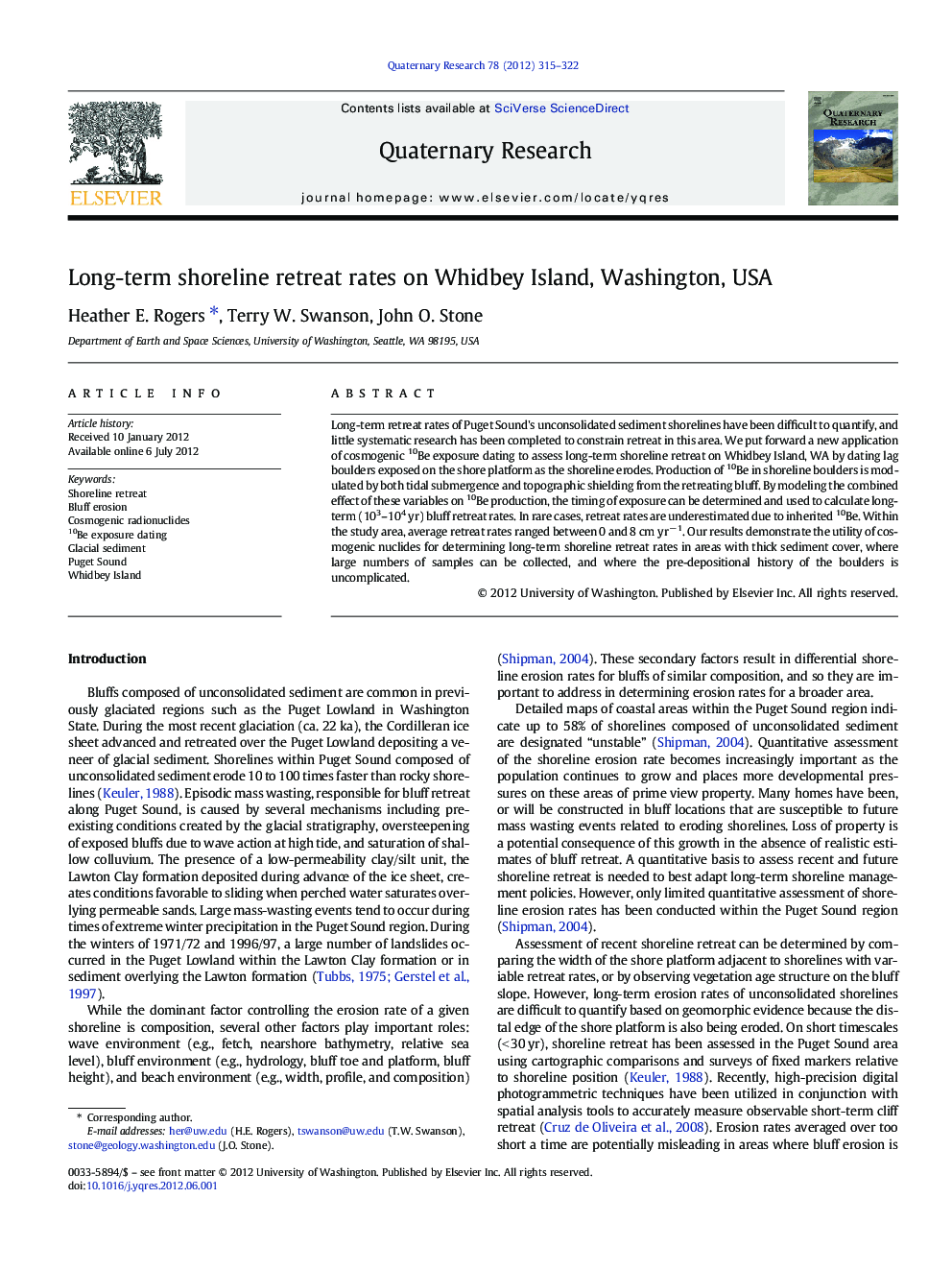| Article ID | Journal | Published Year | Pages | File Type |
|---|---|---|---|---|
| 1045462 | Quaternary Research | 2012 | 8 Pages |
Long-term retreat rates of Puget Sound's unconsolidated sediment shorelines have been difficult to quantify, and little systematic research has been completed to constrain retreat in this area. We put forward a new application of cosmogenic 10Be exposure dating to assess long-term shoreline retreat on Whidbey Island, WA by dating lag boulders exposed on the shore platform as the shoreline erodes. Production of 10Be in shoreline boulders is modulated by both tidal submergence and topographic shielding from the retreating bluff. By modeling the combined effect of these variables on 10Be production, the timing of exposure can be determined and used to calculate long-term (103–104 yr) bluff retreat rates. In rare cases, retreat rates are underestimated due to inherited 10Be. Within the study area, average retreat rates ranged between 0 and 8 cm yr− 1. Our results demonstrate the utility of cosmogenic nuclides for determining long-term shoreline retreat rates in areas with thick sediment cover, where large numbers of samples can be collected, and where the pre-depositional history of the boulders is uncomplicated.
